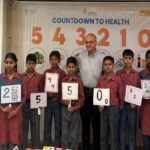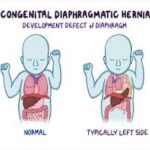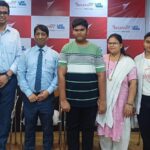During the 18th Annual Conference Of India Stroke Association INSC 2025, Lucknow, Dr Nirmal Surya, highlighted the vital aspects of stroke care in India~
India has around 1,250 stroke rehab centers, with 80% in metros and tier-I cities, and only 20% in rural areas
India
healthysoch
Lucknow/Chandigarh, March 29, 2025:
The 18th Annual Conference of the Indian Stroke Association (INSC 2025) in Lucknow brought together leading doctors, researchers, and healthcare experts from across the globe. With the theme “Innovation and Integration in Stroke,” the event received an overwhelming response, shedding light on the urgency of advancing stroke care. During the conference, Dr Nirmal Surya, President of the Indian Stroke Association (ISA), presented a comprehensive overview of stroke in India. He emphasized the country’s high incidence and mortality rates, the burden of disability, and critical gaps in awareness, timely treatment, and healthcare infrastructure. He further stressed the pressing need for stroke rehabilitation and long-term care to improve patient outcomes and bridge existing healthcare disparities.
Stroke is a medical emergency and timely diagnosis, management and rehabilitation are key to saving the lives of thousands of patients. Dr. Nirmal Surya is a visionary leader in neurorehabilitation, serving as the president of multiple prestigious organizations, including the Indian Stroke Association (ISA) and the Indian Federation of Neurorehabilitation. A passionate advocate and innovator, he has pioneered neurorehabilitation in India, mentoring young professionals and collaborating on low-cost rehab solutions. Through his free epilepsy clinics, support groups, and awareness programs, he has impacted thousands of lives. Dr Nirmal Surya highlighted the comprehensive map of stroke in India during the 18th Annual Conference Of India Stroke Association INSC 2025.
“Stroke care remains a critical challenge in India due to high incidence and mortality rates, disability burden, delayed treatment, and gaps in infrastructure and awareness. There is an urgent need for stroke rehabilitation and long-term care to improve patient outcomes. Reflecting on past efforts, between 1988-1989, we trained around 20 ICU nurses in stroke care, teaching essential skills such as patient positioning, mobility, and bedside care. This significantly reduced mortality rates and improved recovery, allowing more patients to return home. To raise awareness of stroke, a global webinar was organized during the COVID-19 pandemic, which was attended by over 5,000 participants from 36 countries, free of cost. We also introduced specialized courses, including a weekly spasticity management program, and continued to advance stroke care through numerous research studies and publications. Rapid access to stroke rehabilitation and advanced care can help patients regain mobility, speech, and independence, enhancing their overall quality of life, said Dr Nirmal Surya, President of the Indian Stroke Association (ISA).
Stroke rehabilitation is an important aspect that shouldn’t be ignored and helps to improve the quality of life of the patient. According to the findings of Education, Training, and Practice Of Neurorehabilitation In India During the Covid-19, published in February 2021 by Dr Nirmal Surya, there were majority of rehabilitation centers in urban areas, 38% had one or more multidisciplinary team members, education and training was sub-par, monetary benefits for professionals were low and there were no advanced rehabilitation centers in India. People had also moved from physical rehab to tele-rehab.
Dr Nirmal Surya underscored, “India has approximately 1,250 stroke rehabilitation centers, some offer comprehensive multidisciplinary care, and others offer basic physiotherapy services only. 80% of stroke rehabilitation centers are in metros and tier-I cities and well-equipped hospitals with neurologists, physiotherapists, and occupational therapists with an average travel time to a center is 30-60 minutes. In contrast, only 20% of stroke rehab centers serve rural areas, where access to specialized neurological care is limited. Many patients must rely on basic physiotherapy centers or travel nearly 120 km for treatment. Regionally, South India has the highest share (35%, 438 centers), followed by North India (25%, 313 centers), West India (20%, 250 centers), East & Northeast (15%, 188 centers), and Central India (5%, 63 centers).”
Dr Nirmal Surya added, “Talking about the types of stroke rehabilitation facilities, there are 30% of advanced multidisciplinary centers that offer neurologists, physiotherapists, occupational therapists, speech therapists, and cognitive rehabilitation specialists. 50% of basic rehabilitation clinics are there which focus on physiotherapy and mobility training. These clinics are found in tier-2 cities and district hospitals. 20% are home-based and telerehabilitation services in the form of mobile apps and online consultations to provide therapy remotely and helpful for patients from remote and underserved areas.”







